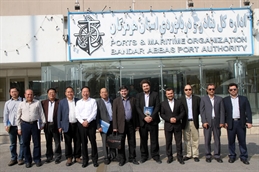
With the recent lifting of economic and trade sanctions on Iran, a number of international container carriers are lining up to make, or have already made, a return to the Asia/Iran container trades.
As rumours continued to build at the beginning of the second quarter of 2015 that there would be, at least, an easing of sanctions on Iran, one of the first lines out of the starting blocks was Hyundai Merchant Marine (HMM), which during April included a direct call at Bandar Abbas on its Korea/East Asia/Middle East service known as the KMS service. The KMS service is operated with 7 x 6,500 TEU vessels.
However, the biggest influx of new services connecting Iran with Asia has come after the official lifting on sanctions, with more expected this month.
Last month, two services included a new call at Bandar Abbas, with both Hanjin and Yangming adding their individual inroads into the Iranian market, thereby picking up on the new Asia/Iran trade potential.
On the Hanjin-operated Far East/Middle East Express, known as the FMX service, Bandar Abbas has been added on the eastbound route back to Asia, while for Yangming, a new call at Bandar Abbas has been included in the schedule of the China Gulf Express (CGX).
On the CGX service, Bandar Abbas has been included as last port outbound from the Middle East before heading back to Port Kelang, Kaohsiung and Shanghai.
The FMX operates with 7 x 6,000/8,500 TEU vessels, while the CGX service deploys a service fleet of 6 x 6,000 TEU vessels.
August sees the O3 Alliance lines, CMA-CGM, UASC and China Shipping, bring in a new Bandar Abbas call on their jointly-operated CIMEX/AMA/AGX1 service, which operates with a service deployment in excess of 11,000 TEUs per week.
A lot of market focus is being placed on local Tehran-headquartered carrier HDS Lines, which took over control of the majority of the IRISL container ship fleet during the early stages of the sanctions. As sanctions took a firmer grip on Iran trade, HDS was forced to restructure its service network, and eventually concentrate its efforts on the building of a local service network concentrating on the Middle East market.
With sanctions lifted, the big question is whether HDS will develop its fleet and service structure to fit the future economic demands of Iran, which would certainly involve trade with Asia and Europe.
By Paul Richardson
Sea Freight Correspondent | London




